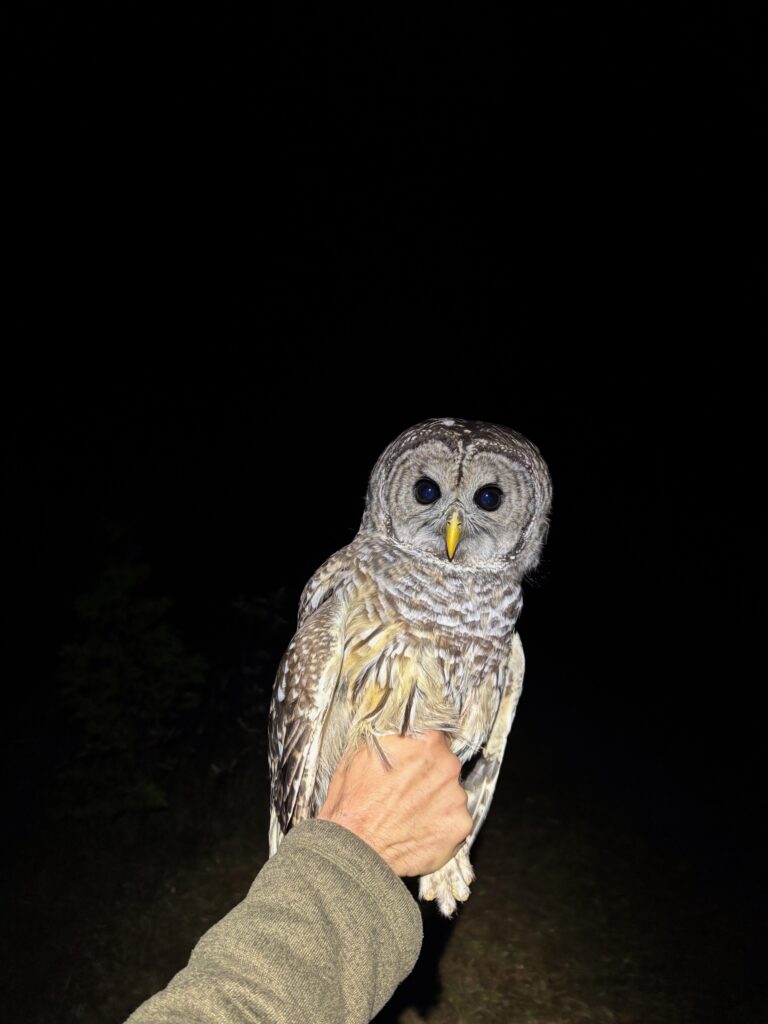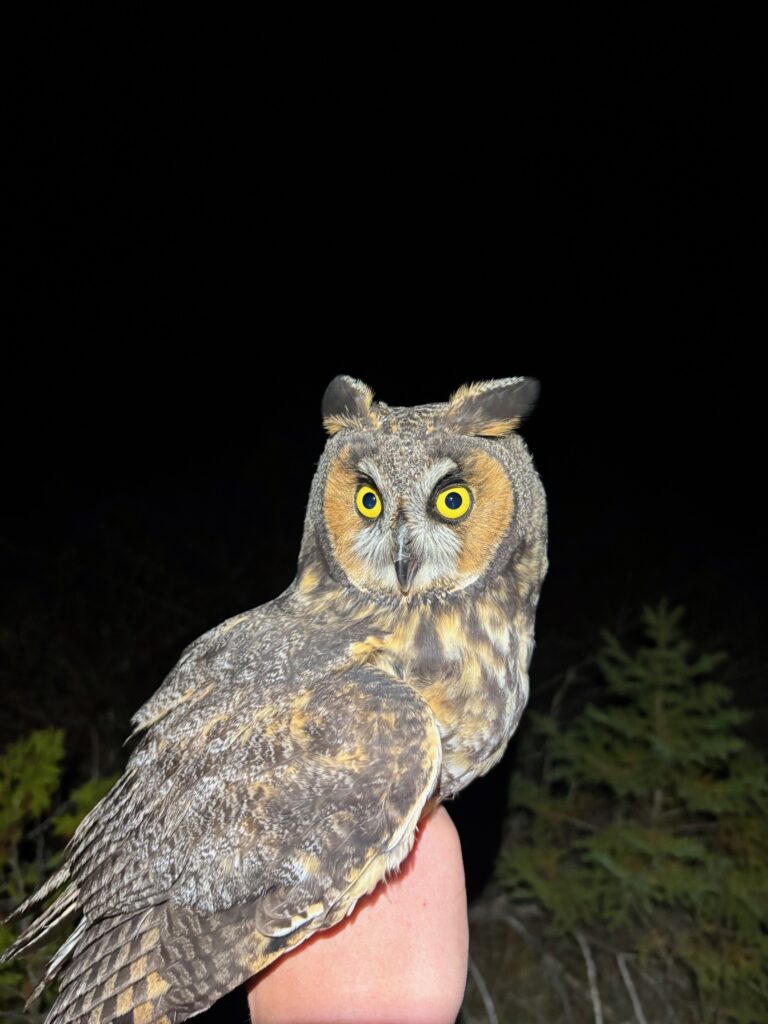Our penultimate week banding at the Straits has passed, and all signs are indicating that we are nearing the end of our season as migratory activity has greatly slowed. Not helping this week were a few days of high winds. We were closed the nights of October 27th and November 2nd and could only open for a few hours the morning of the 29th. Only 20 owls were captured this week and all were northern saw-whet owls (NSWOs). The number of birds caught each night we were opened ranged from 7-8 to just 1-2. Our number of male NSWOs and birds sexed as unknown are both equal at 59, while females number at 220.

After discussing owl adaptations last week, we want to highlight information specific for the three species we captured this season, starting with the NSWO. The NSWO is one of the smallest owls in North America. Despite also being one of the most common, it has historically been understudied due to its secretive nature and believed to have been rare, though intensified banding efforts the past few decades have proven otherwise. While our season has been considered slower than expected, the 338 NSWOs caught so far help demonstrate just how many of these little owls there are.
NSWOs are believed to have been named by early settlers who found their call reminiscent of sharpening saws with whetting stones. These birds commonly prefer coniferous forests and are cavity nesters, meaning they nest in sheltered openings such as tree hollows or artificial nest boxes. Females handle the incubation and brooding, while males hunt and small mammals, typically mice, voles and shrews make up their diet which is supplemented by insects. NSWOs are found across much of southern Canada and the continental U.S. throughout the year, though are seldom observed in the Southeast, as well as parts of Mexico. Every few years they will undergo an irruption, in which larger numbers migrate south often driven by changes in food availability.

The barred owl (BDOW) is the largest of the three species we captured and a common predator of NSWOs, in addition to other small birds, mammals, reptiles, amphibians, and invertebrates. Their brown and white barred appearance and hooting calls make them a well-known owl to birders and non-birders alike. These owls utilize coniferous, deciduous, as well as mixed forests, but prefer those near water. Unlike NSWOs, BDOWs don’t migrate and often stay within an established territory year-round; young birds seek out their own territories once independent. Natural cavities in trees are commonly chosen as nest sites, though stick platform nests from other animals and artificial nest boxes are taken advantage of as well. Mating pairs are believed to be life-long and can be very aggressive to potential intruders, including humans.
While known to hunt NSWOs, BDOWs themselves need to be wary of great horned owls, which are capable of hunting adults, as well as other raptors and larger mammals that go after their nests. Even songbirds and woodpeckers are capable of forming groups to harass these owls, a behavior known as mobbing. While initially residing across the Eastern U.S. and Canada, human alterations to the landscape have allowed these birds to move westward, particularly the Pacific Northwest where they are considered a serious competitor to the smaller, less aggressive and more specialized spotted owl that is already threatened by habitat loss.

The long-eared owl (LEOW) is the rarest visitor to our banding station and its flamboyant appearance, thanks to its plumage and ear tufts, make this species excellent at camouflage. Intermediate in size between the NSWO and BDOW, the LEOW also uses forest habitats, particularly for roosting, but often prefers those near more open areas for hunting small mammals, birds and reptiles, such as shrublands, grasslands and meadows. These owls migrate and are found across southern Canada, the Northeast and Western U.S. throughout the year; they are rarer in the Southeast.
LEOWs form large communal roosts in dense tree stands during winter to provide protection from the elements and predators (often other large owls and raptors), before breaking up into pairs for the breeding season. Rather than construct their own nests, these owls often use stick nests built by other animals and also utilize tree or cliff cavities. Unlike the NSWO and BDOW, the LEOW can be found beyond North America and its range includes most of Europe, Asia, and even parts of northern Africa, however, they are restricted to the Northern Hemisphere.

Information on these three owl species was sourced from the Cornell Lab of Ornithology’s All About Birds website (https://www.allaboutbirds.org/news/). This is an excellent online resource accessible to both beginners and experts for learning identification, life histories, range maps, and other information about particular groups or species or just birds in general.
Season Numbers:
Total: 346, NSWO: 338, BDOW: 6, LEOW: 2
Jake and Josiah
